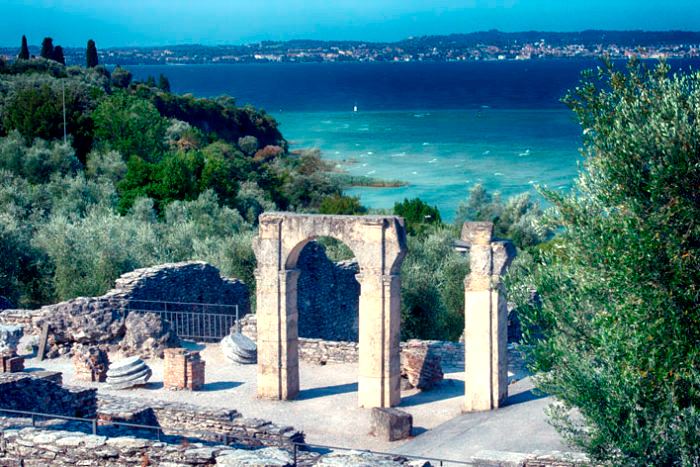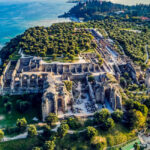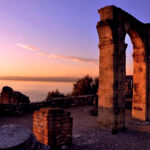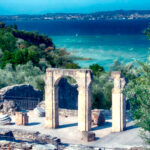Grottoes of Catullus
On the extreme northern tip of the Sirmione peninsula, with an enviable panoramic position, there are the remains of one of the most imposing Roman villas in northern Italy.
These remains were named Grottoes di Catullus in the fifteenth century, after the discovery of a poem by Catullus that mentioned his return home to Sirmione.
The large villa, which occupies an area of about two hectares, was certainly built after Catullus’ death in 54 BC Scholars place its construction between the end of the 1st century BC and the beginning of the 1st century AD.
The building was abandoned and fell into disrepair during the 3rd century.
The villa has a rectangular plan (167 x 105 m) and has two foreparts on the southern and northern shorter sides. The villa was developed on three floors. The two lower floors, partially buried, were obtained through the excavation of the rocky layer that forms the peninsula and now are well conserved. Only a few elements of the main floor are preserved since the remains of the villa were used as a quarry for building materials from late antiquity. The two longer sides had an overlap of cryptoporticus and portico and delimited the large internal garden of about 4000 square meters.
The large rooms on the lower floor which, after the abandonment of the building, opened towards the north covered with vegetation gave to the remains the appearance of a series of natural caves.
During the early Middle Ages, the structures of the villa were incorporated into the walls to defend the inhabited center of Sirmione.
When, in the Renaissance, the remains of the Roman villa were connected with the figure of the poet Catullus, the site had considerable popularity and in the 16th century, it was visited by two of the most interesting personalities of Italian culture and art: Isabella d’Este Gonzaga and Andrea Palladio.
The Napoleonic general Lacombe-Saint-Michel carried out, in 1801, the first systematic studies on the archaeological remains of the villa. Afterward, the noble Veronese Count Giovanni Girolamo Orti Manara carried out studies and surveys which he published in 1856.
The archaeological area with its museum inaugurated in 1999 is easily visited.






